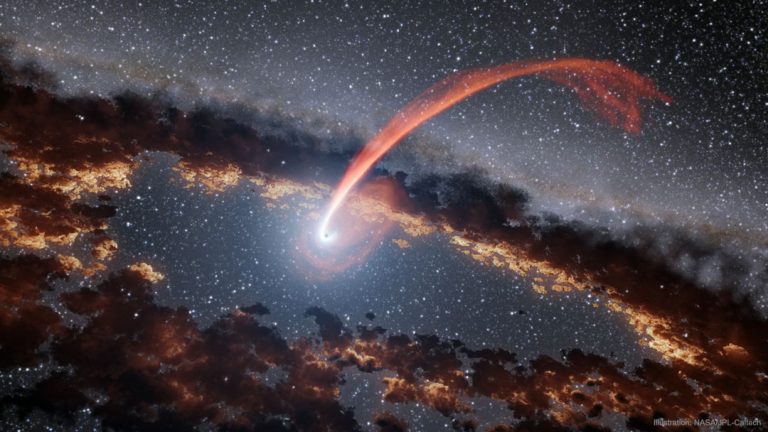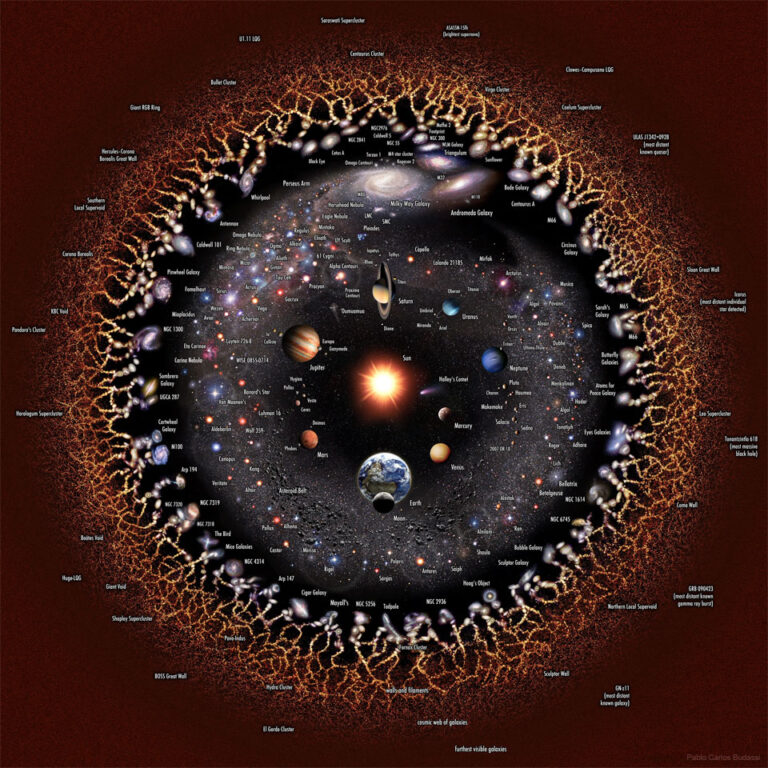黑洞拆解路过的恒星
插图显示中心有一个小黑点,那是一个黑洞。一股红色的气流或气体从顶部弧线喷出。黑洞也被一个黑暗的尘埃盘包围着。有关更多详细信息,请参阅说明。

插图显示中心有一个小黑点,那是一个黑洞。一股红色的气流或气体从顶部弧线喷出。黑洞也被一个黑暗的尘埃盘包围着。有关更多详细信息,请参阅说明。

2023年6月4日 Color the Universe Image Credit: Unknown, possibly C. Flammarion Explanation: Wouldn’t it be fun to color in the universe? If you think so, please accept this famous astronomical illustration as a preliminary substitute. You, your friends, your parents or children, can print it out or even color it digitally. While coloring, you might be interested to know that even though this illustration has appeared in numerous places over the past 100 years, the actual artist remains unknown. Furthermore, the work has no accepted name — can you think of a good one? The illustration, first appearing in a book by Camille Flammarion in 1888, is frequently used to show that humanity’s present concepts are susceptible to being supplanted by greater truths. Tomorrow’s picture: a…

2022年3月16日 The Observable Universe Illustration Credit & Licence: Wikipedia, Pablo Carlos Budassi Explanation: How far can you see? Everything you can see, and everything you could possibly see, right now, assuming your eyes could detect all types of radiations around you — is the observable universe. In light, the farthest we can see comes from the cosmic microwave background, a time 13.8 billion years ago when the universe was opaque like thick fog. Some neutrinos and gravitational waves that surround us come from even farther out, but humanity does not yet have the technology to detect them. The featured image illustrates the observable universe on an increasingly compact scale, with the Earth and Sun at the center surrounded by our Solar System, nearby stars, nearby…

2020年11月26日 The Great Turkey Nebula Imagination Credit & Copyright: Eric Coles Explanation: Surprisingly reminiscent of The Great Nebula in Orion, The Great Turkey Nebula spans this creative field of view. Of course if it were the Orion Nebula it would be our closest large stellar nursery, found at the edge of a large molecular cloud a mere 1,500 light-years away. Also known as M42, the Orion Nebula is visible to the eye as the middle “star” in the sword of Orion the Hunter, a constellation now rising in planet Earth’s evening skies. Stellar winds from clusters of newborn stars scattered throughout the Orion Nebula sculpt its ridges and cavities seen in familiar in telescopic images. Similar in size to the Orion Nebula, this Great Turkey…